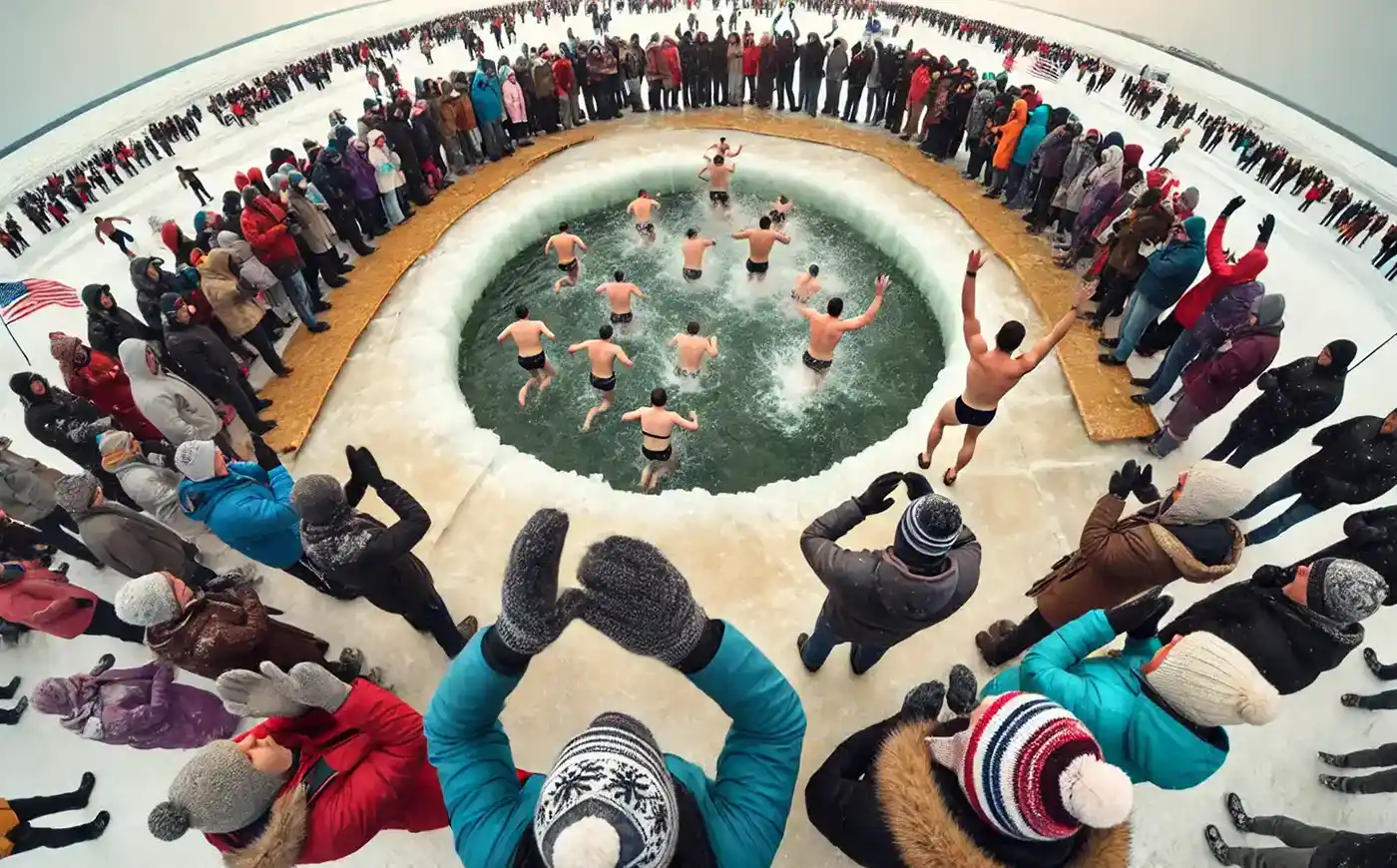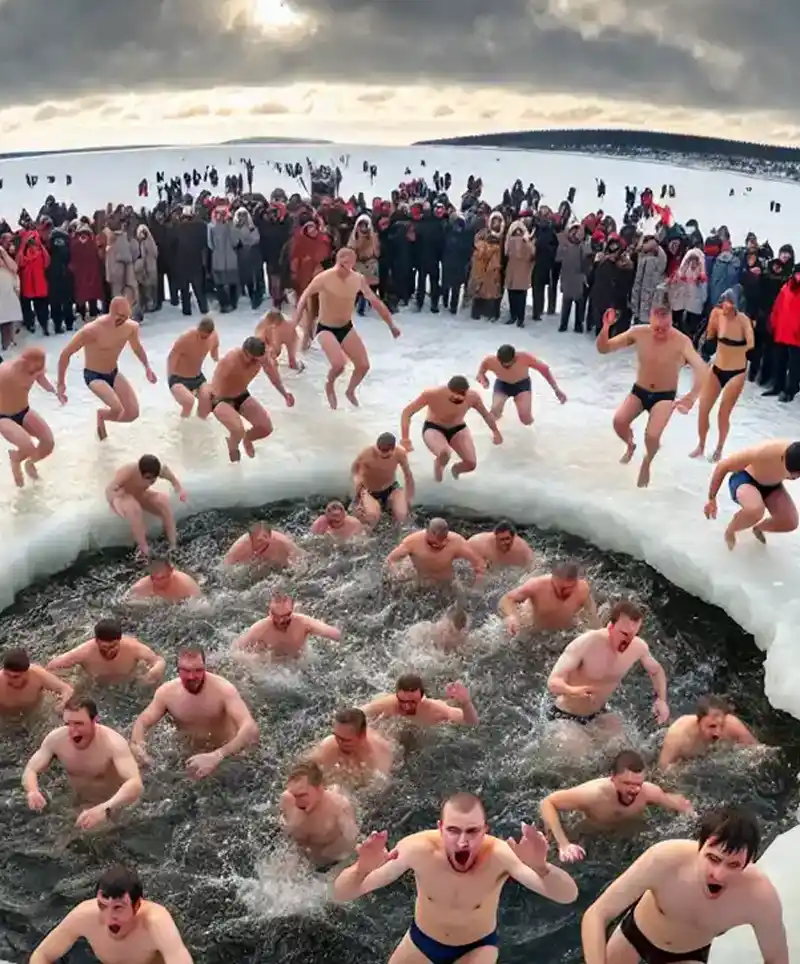When the new year rolls around, most people huddle under cozy blankets, sipping hot cocoa, and making resolutions they'll forget by February. But for a brave, slightly kooky subset of humanity, January 1st means one thing: Polar Bear Plunge Day. Yes, it’s the day when people voluntarily dash into icy waters, and no, we haven't lost our minds—at least not entirely.
The Chilling Origin Story
When Peter Pantages, a Greek immigrant who had a penchant for swimming year-round in English Bay, invited his friends for a New Year’s Day swim in 1920, he couldn’t have known he was starting a legacy. The frigid plunge in Vancouver’s waters became an annual event, growing in popularity and leading to the establishment of the Vancouver Polar Bear Swim Club. Pantages’ enthusiasm for the icy tradition was infectious, and even after his passing in 1971, the event continued to flourish. Today, his legacy endures as thousands of participants worldwide celebrate Polar Bear Plunge Day, diving into freezing waters to mark the New Year with a chilly splash.
The enduring appeal of the Polar Bear Plunge lies not just in the thrill of the icy dip but in the sense of community and adventure it fosters. Participants often dress in quirky costumes, adding a festive atmosphere to the event. The plunge has also become a significant fundraising opportunity, with many events supporting charitable causes. This blend of fun, philanthropy, and tradition ensures that Pantages’ legacy lives on, as more and more people embrace the cold each year. The Polar Bear Plunge is more than just a swim; it's a testament to human resilience and the power of coming together to celebrate new beginnings in the most refreshing way possible.
The Polar Bear Plunge, like all great traditions, has murky origins. Some say it began in Canada, where a bunch of thrill-seekers decided it wasn't cold enough to simply stand outside in January. They needed to jump into frigid waters too. Others trace it back to Nordic traditions, where plunging into icy lakes was believed to ward off evil spirits. Apparently, evil spirits hate the cold as much as we do.
The first recorded Polar Bear Plunge took place in Boston in 1904. Since then, it has spread across the globe, with particularly strong traditions in Canada and the Netherlands. In Vancouver, the Polar Bear Swim Club has been active since 1920, drawing over a thousand participants each year. The Dutch, never to be

Why Take the Plunge?
You might be wondering why anyone would willingly dive into water that could double as a slushy machine. Good question. For many, it's about charity. Polar Bear Plunge events often raise money for various causes, from Special Olympics to local community projects. So, while participants' extremities might be numb, their hearts are warm with generosity.
 For others, it’s about starting the new year with a splash—literally. There's something invigorating about shocking your system awake with a freezing plunge. It's like a reset button for the body and mind, screaming, "Hello, New Year! Let's do this!"
For others, it’s about starting the new year with a splash—literally. There's something invigorating about shocking your system awake with a freezing plunge. It's like a reset button for the body and mind, screaming, "Hello, New Year! Let's do this!"
The Plunge Preparation
Before you strip down to your swimsuit and make a beeline for the icy abyss, a little preparation is key. Here’s a quick guide:
- Layer Up (Before and After): While you won't be diving in with your parka, have plenty of warm layers ready for when you emerge from the water. Trust us, you'll need them.
- Warm Up: Do some light exercises to get your blood flowing. Jumping jacks, running in place, or doing the chicken dance—all valid warm-up techniques.
- Safety in Numbers: Never plunge alone. Always have a buddy or join an organized event where safety measures are in place. Plus, misery loves company, right?
The Plunge Itself
The moment of truth. You stand at the water’s edge, the icy wind nipping at your bare skin. Your friends cheer (or laugh) as you muster the courage. Then, with a deep breath, you take the leap. For a split second, it's exhilarating. Then, the cold hits, and every nerve in your body screams, "Why are we doing this?!"
But before you know it, it's over. You're scrambling back to shore, shivering but grinning. You've done it. You've conquered the cold. And you have the bragging rights (and possibly the frostbite) to prove it.
Post-Plunge Recovery
Once you're out of the water, it’s all about getting warm, fast. Towels, hot drinks, and huddling close to a heat source are your best friends. Changing out of your wet clothes immediately is crucial to avoid hypothermia. A hot shower can work wonders, but if one isn't available, bundling up in dry, layered clothing is a good substitute. Sip on warm beverages like hot cocoa or tea to help raise your core temperature from the inside. Reuniting with your fellow plungers and sharing the experience can also lift your spirits and warm your heart, if not your toes. And don’t forget to take a picture—if only to remind yourself later why you might want to skip it next year.
Fun and Facts
- Record-Breaking Plunges: The largest Polar Bear Plunge on record happened in 2010 in Maryland, with over 12,000 participants. That's a lot of goosebumps!
- Health Benefits: Believe it or not, cold-water immersion can boost your immune system, improve circulation, and release endorphins. So, it’s not just for laughs.
- Global Phenomenon: From Canada to the Netherlands, the Polar Bear Plunge is a global event. In some places, it’s as much a part of New Year’s Day as champagne and confetti.
The Real Reason We Do It
At the end of the day, the Polar Bear Plunge is about more than just the cold. It’s about community, tradition, and starting the year with a sense of adventure. It’s about challenging ourselves to do something a little bit crazy and coming out the other side with a great story to tell. So, next January 1st, consider joining the ranks of the Polar Bears. Just remember to bring a towel.
Please Share our Content







 For others, it’s about starting the new year with a splash—literally. There's something invigorating about shocking your system awake with a freezing plunge. It's like a reset button for the body and mind, screaming, "Hello, New Year! Let's do this!"
For others, it’s about starting the new year with a splash—literally. There's something invigorating about shocking your system awake with a freezing plunge. It's like a reset button for the body and mind, screaming, "Hello, New Year! Let's do this!"








 "Sláinte!" is a traditional Irish expression used as a toast, equivalent to "Cheers!" in English.
"Sláinte!" is a traditional Irish expression used as a toast, equivalent to "Cheers!" in English.